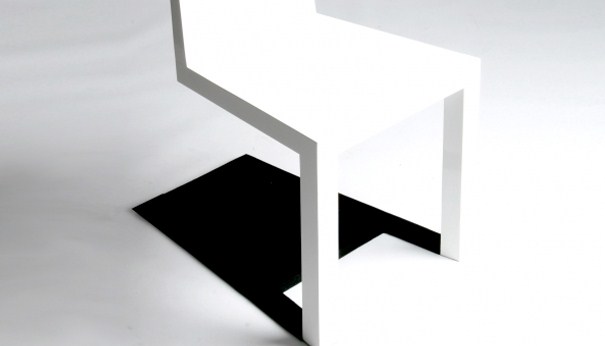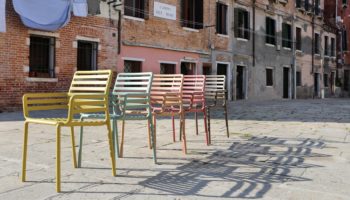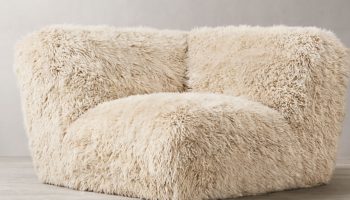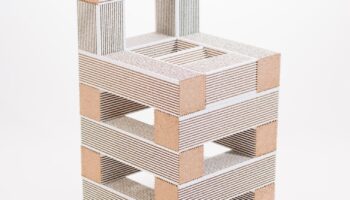Duffy London’s Gravity-Defying Shadow Chair
I’ll admit that I’m a bit stumped by Duffy London‘s enigmatically-named Shadow Chair. Not because I’m in any way chagrined by a potentially dubious utility—though the apparent “two-legged” construction would seem to have certain pitfalls as regards functionality; nor because I recoil from the easy gimmick. Just have a look at Him/Her or the Armadillo Chair to confirm my affection for “thematic” pieces. To the contrary, my consternation vis a vis the Shadow Chair concerns exactly how to quantify/qualify it, such are its manifold charms.
Shadow Chair. Manufactured by Duffy London.
First glance has me aligning it with the great roster of cantilevered pieces. This lineage spans from Verner Panton’s signature Panton Chair to Konstantin Grcic’s clever Myto. Then, of course, there’s the ripe legacy of minimal appendage—best exemplified in Walter Papst’s seminal 3-legged chair, and recently re-visited in last winter’s Tolima Chair by Will Oltman.



But to do true justice to the Shadow Chair, I find myself resorting to my literary roots: in Haruki Murakami’s fable, Hard Boiled Wonderland and the End of the World, reality splits in two, and the bodily Achilles Heel of one of these two worlds is one’s shadow, which can be forcibly removed with the right know how and a very sharp knife. In this world, if you lose your shadow, you lose your soul—your memories, your wit, your sense of humor, your unique personality. The “shadowless” become shades of their former selves, leading dreary, drab humorless lives until they wither and die.
One imagines it much the same with Duffy London’s piece. For, if you haven’t intuited it by now, the “shadow” in sharp relief beneath the chair (as if it were perpetually pursued by a malevolent indoor sun) is the piece’s structural heart, not to mention its metaphorical heart and soul. The floor-bound steel sheet is actually integrated into the chair’s metal core, thus giving it the requisite functional stability for a cantilevered piece. And anyone can see that if some mean-hearted metalsmith were to excise the shadow, the chair would simply tip over and die, the aesthetic appeal of its expertly joined Forest Stewardship Council Walnut notwithstanding.
Thankfully, that’s easier said than done (for all intents and purposes, the integrated metal makes the chair extremely durable). So this is one shadow that will remain part and parcel of the whole, giving you years of “amaze your friends and houseguests” frivolity, while providing a handsome and stylish char to boot!
Via Notcot




Leave a Reply